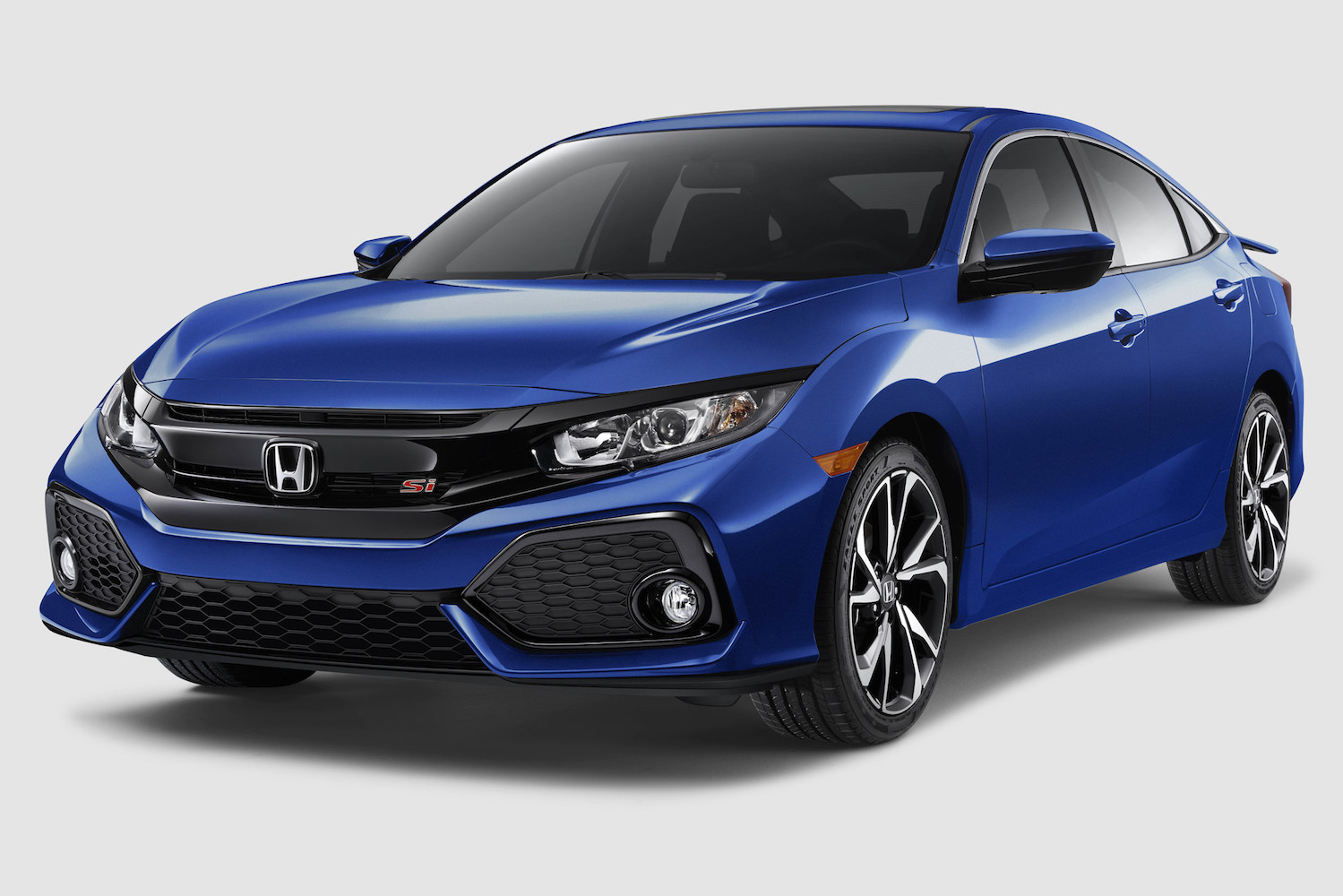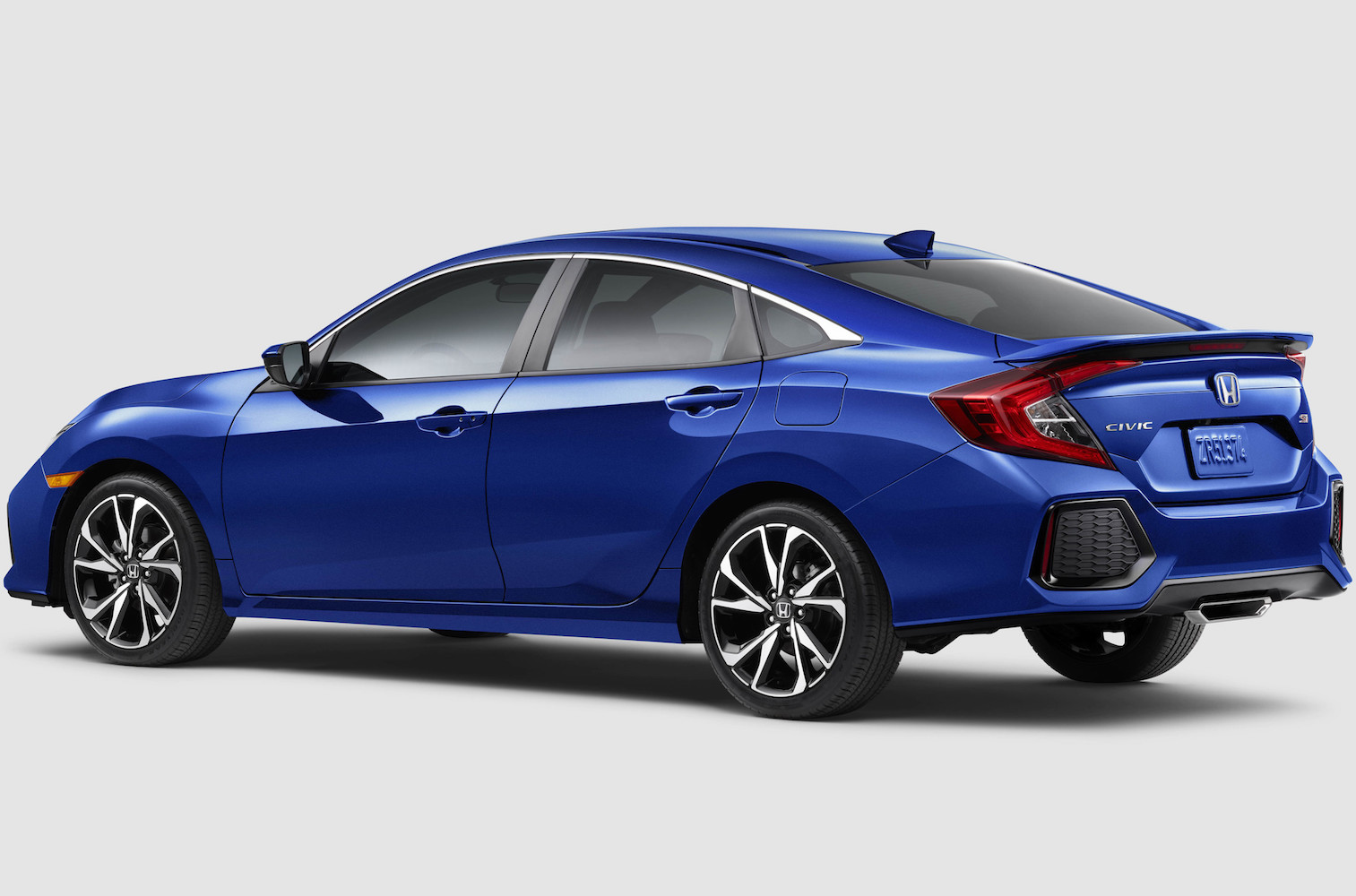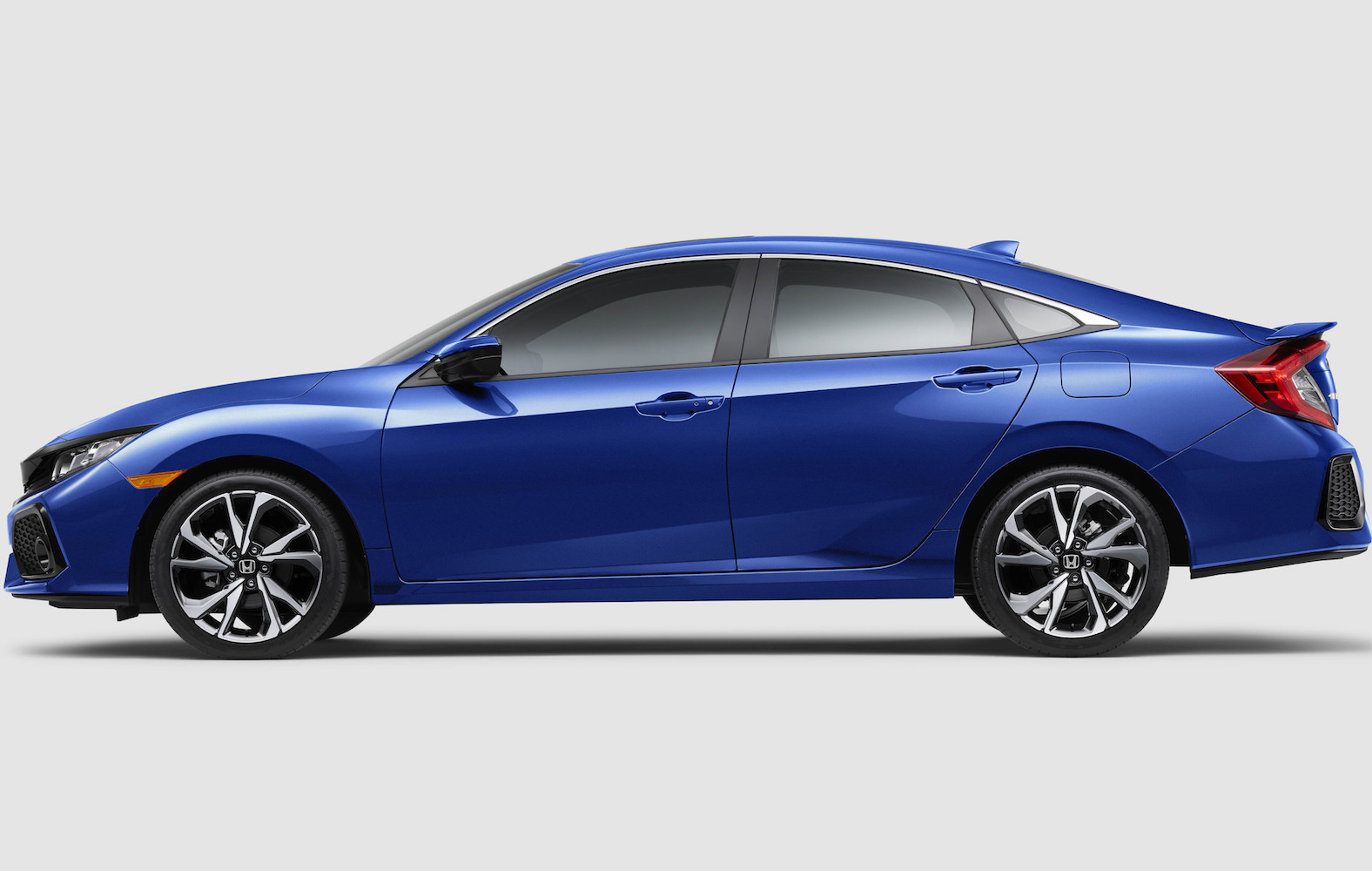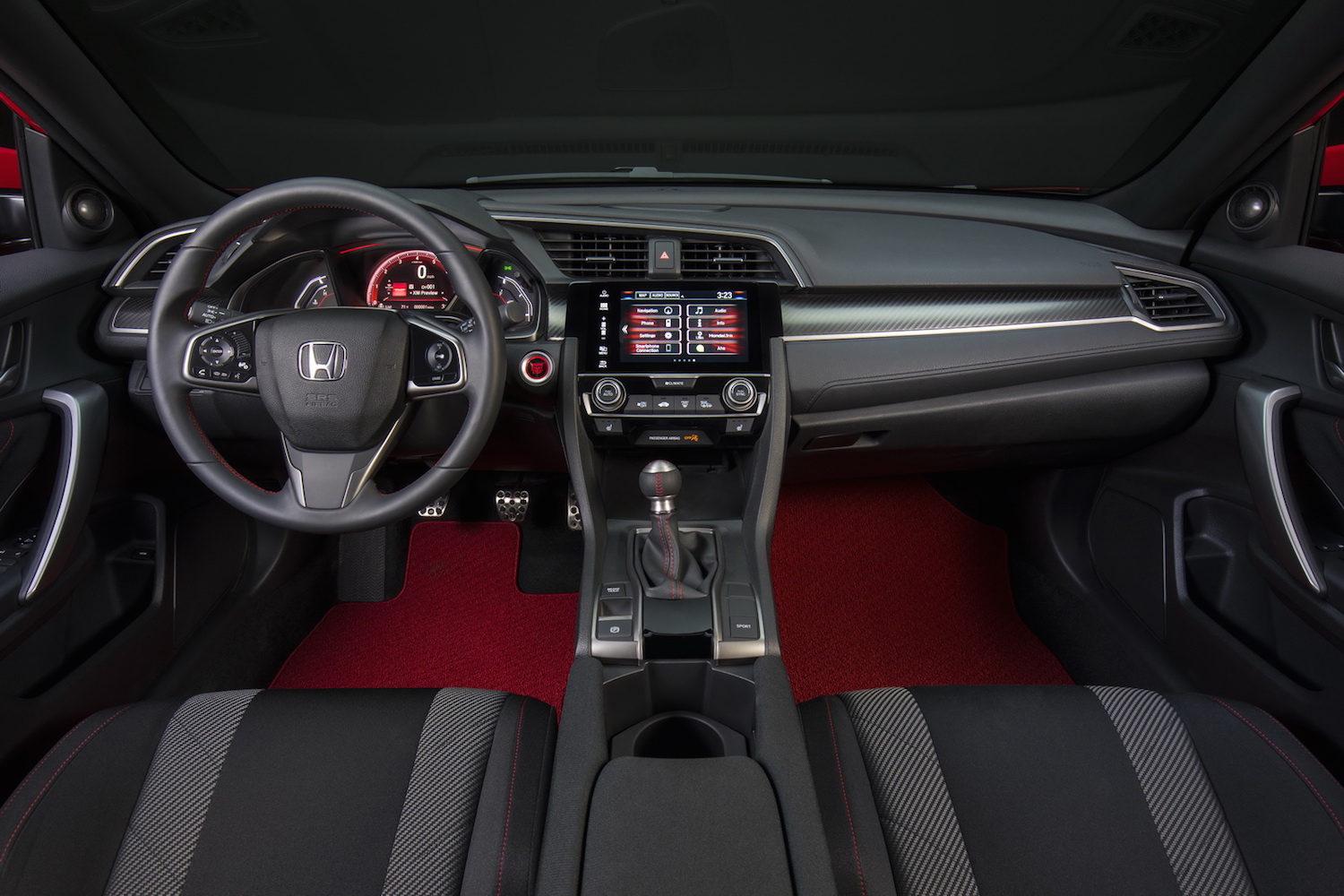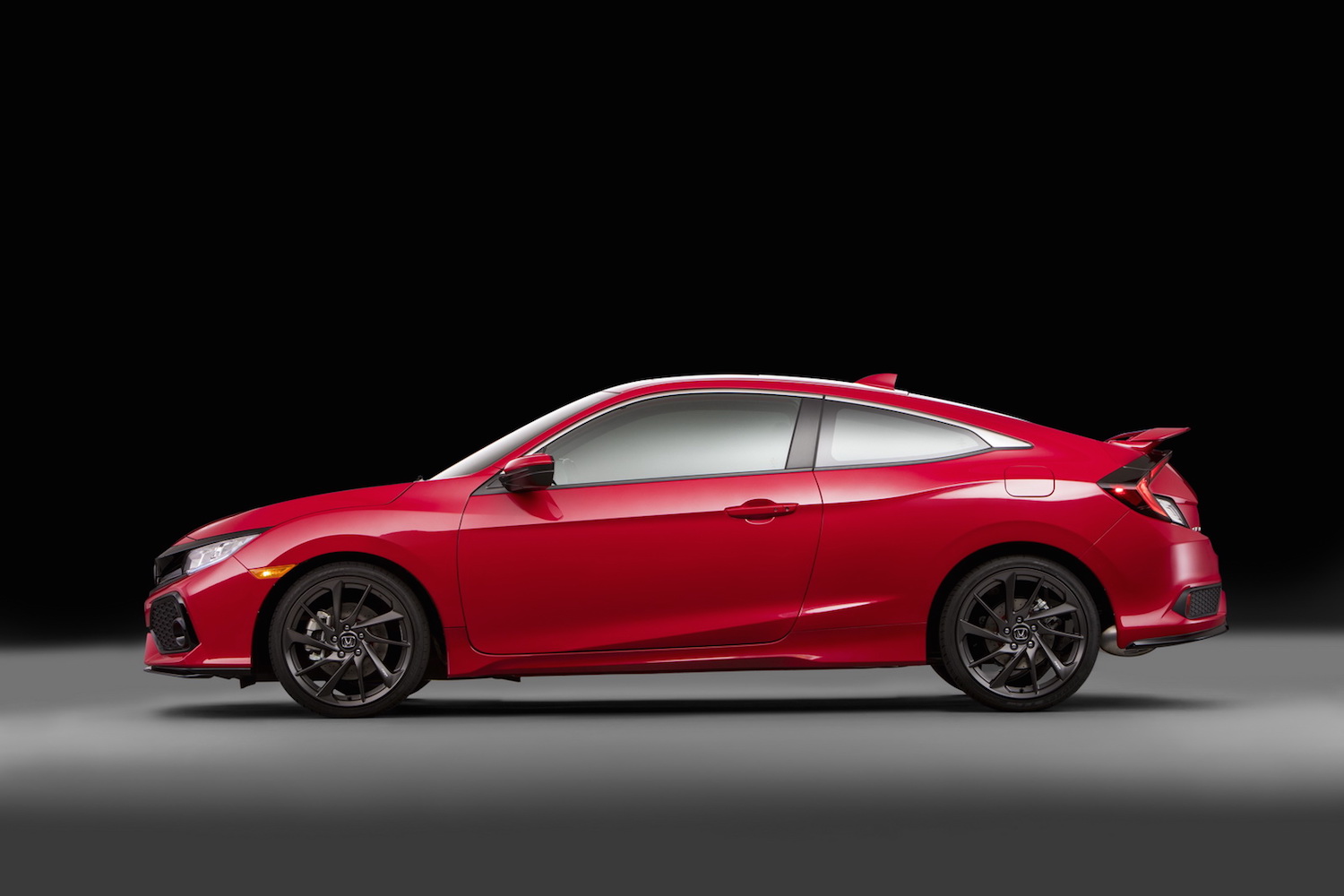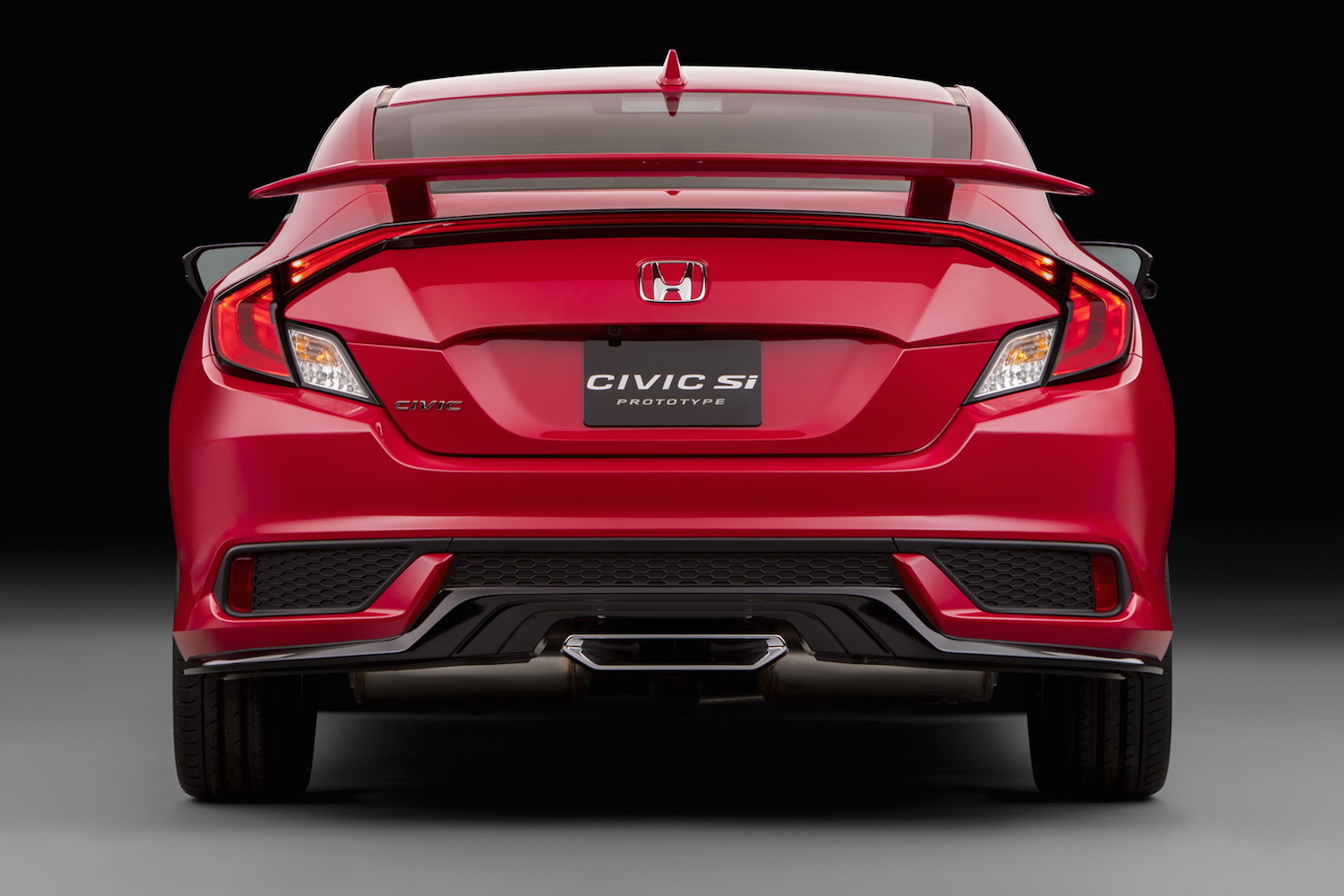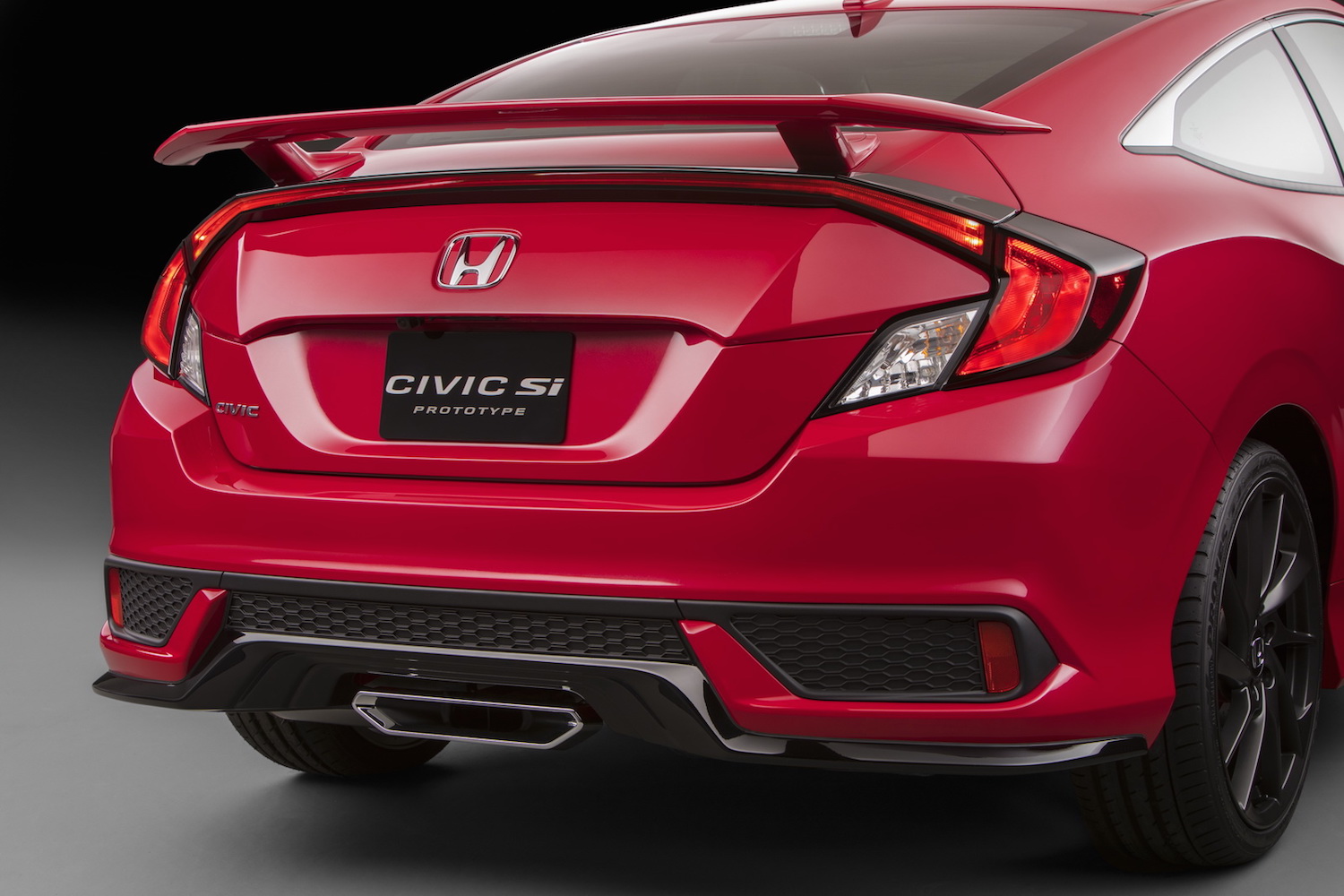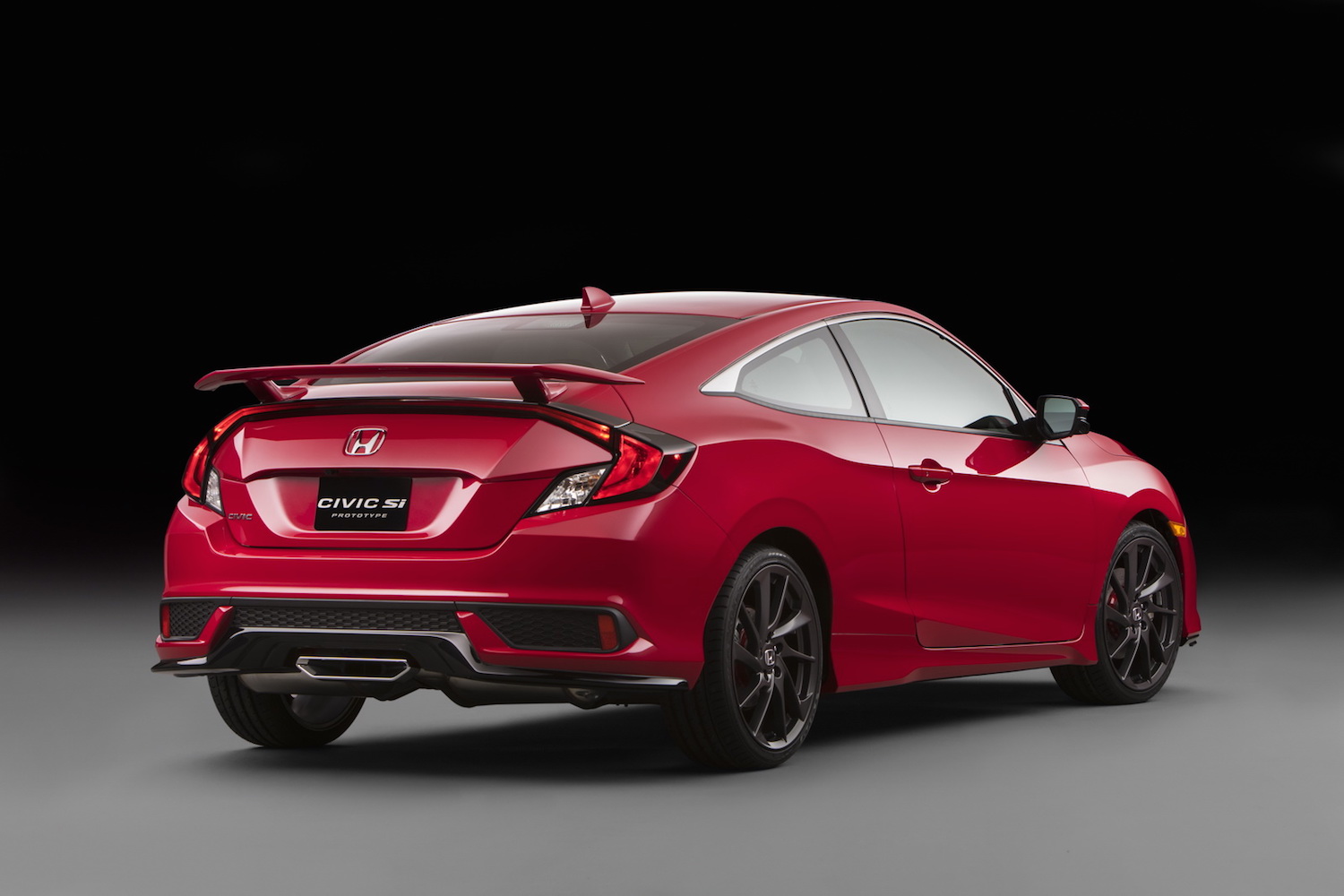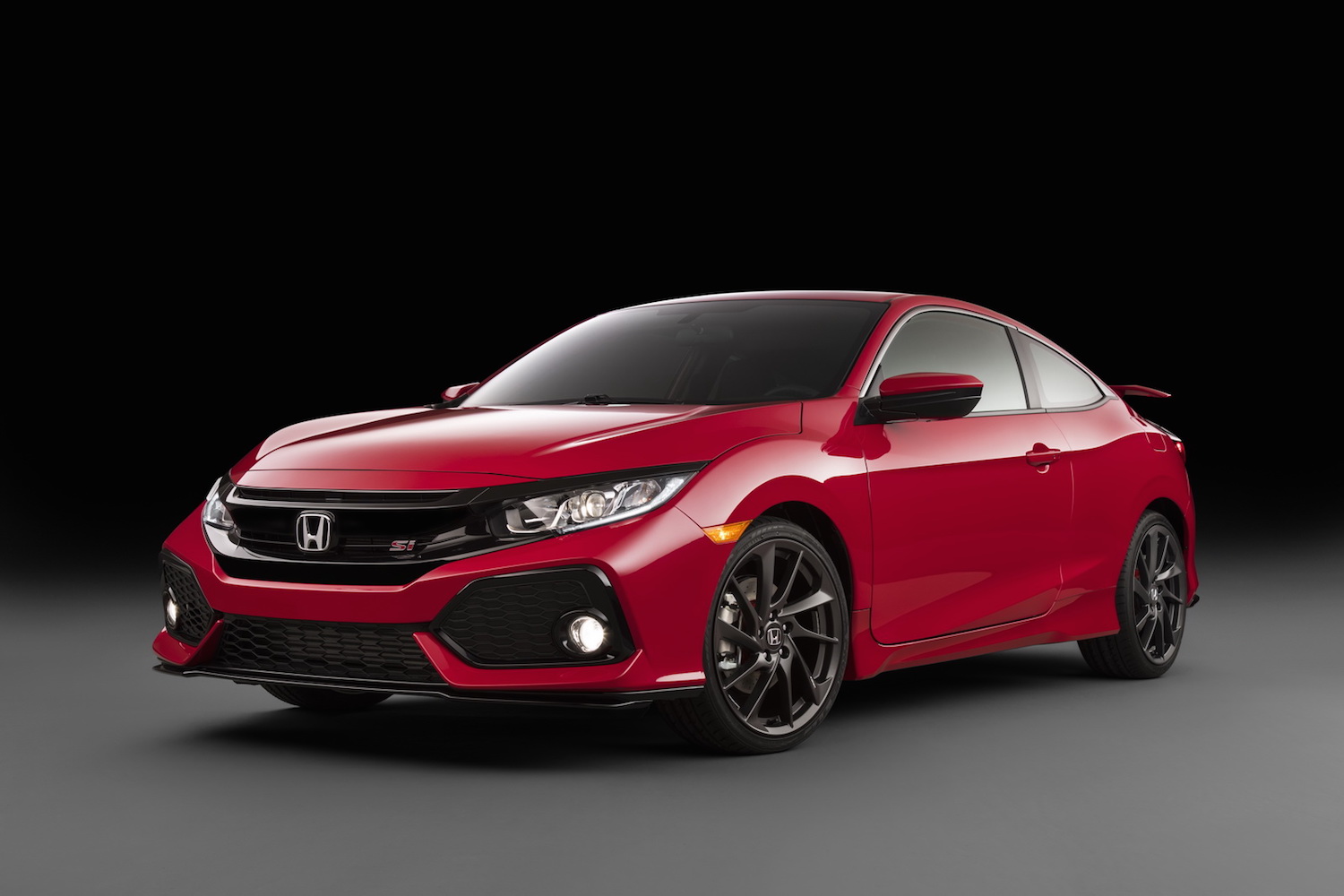Until the 306-horsepower Type R arrives on U.S. shores, the new Si is the quickest Civic you can buy – but don’t expect to have your bones rattled by its specs. Like the standard coupe and sedan, the Si uses a 1.5-liter turbocharged four-cylinder, but it’s tuned to produce 205 horsepower and 192 pound-feet of torque. That means the new Si makes the same power as the last-generation model, but with 18 more lb-ft of twist. Peak torque is also available earlier in the power curve at 2,100 rpm through 5,000 rpm.
Before we get into the Si’s styling (which matches the L.A. Auto Show prototype exactly), let’s get a few things out of the way. First, Honda has no plans to introduce a Hatchback version of the Si. That means the Hatchback Sport and its 180hp engine – which is the quickest Civic on the market – will be the fastest Civic five-door until the Type R blows every other version out of the water. Which leads us to our the second point: some will be disappointed that the Si doesn’t make more power, especially when its rivals like the VW Golf GTI, Ford Focus ST, and Mini Cooper S are deeper into the 200-horse range. Finally, thankfully, graciously, Honda has stuck to its tradition of offering the Si exclusively with a manual transmission – in this case a six-speed.
Compared to the standard coupe and sedan, the Si is distinguished by a more menacing front fascia, blacked out grille, sharper rear fascia, a big fixed rear wing (coupe only), and a trapezoidal single-exit exhaust. Inside, large and tightly bolstered sport seats with Si badging, red contrast stitching throughout the cabin, and red gauges distinguish the Si from regular Civics.
The Civic Si comes with heated seats, dual-zone auto climate control, rain-sensing wipers, a 7-inch display audio system, and a 10-speaker sound system. On the performance hardware side, a Sport button is included to adjust suspension, steering, and throttle settings on the fly. There’s also a mechanical limited-slip differential, sportier springs and dampers, front lower control arms from the Type R, 12.3-inch front brake rotors, and 235mm tires.
The new Si goes on sale next month and will be priced in the mid-$20,000 range.
Editors' Recommendations
- Honda Civic vs. Honda Accord
- The 2020 Honda Civic sedan and coupe arrive tomorrow starting at $20,680
- 2020 Honda Civic hatchback keeps the manual-transmission faith
